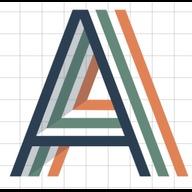Causes of obstructive sleep apnea in adults

What is obstructive sleep apnea?
Obstructive sleep apnea is a condition characterized by a blockage or narrowing of the airway that prevents air from flowing through the trachea during sleep.
The blockage and lack of airflow can lead to a drop in blood oxygen levels. This triggers a survival reflex in the brain that wakes us just enough to breathe again. While this reflex is essential for maintaining breathing, it also disrupts sleep.
If you wake up frequently during the night, you won't feel rested in the morning. This can lead to a variety of symptoms, many of which can affect daytime functioning. In the long term, these symptoms can lead to dangerous, sometimes fatal, complications.
What are the signs and symptoms of obstructive sleep apnea?
When breathing stops, oxygen levels in the body decrease and carbon dioxide levels increase. This often triggers the brain to wake us up to breathe. Most of the time, this happens quickly, and we fall back asleep without even realizing it.
This pattern can repeat itself throughout the night in cases of obstructive sleep apnea. As a result, sufferers don't get a deeper, more restorative sleep.
Signs of obstructive sleep apnea in children include:
- Snoring, often accompanied by pauses, grunting, or gasping
- Rapid breathing during sleep
- Very restless sleep and unusual positions
- Uncontrollable (especially if the child has not wet the bed during the night)
- Daytime sleepwalking or behavioral/learning problems
- Sleepwalking or night terrors
Due to difficulty sleeping well, children may:
- Have difficulty waking up in the morning
- Fatigue or falling asleep during the day
- Difficulty paying attention or hyperactivity
Consequently, obstructive sleep apnea can affect academic performance. Teachers and others may suspect a child has ADHD or a learning disability.
What causes obstructive sleep apnea?
When you sleep, your body is completely relaxed. This includes the muscles that help you breathe. In people with sleep apnea, these relaxed muscles combine with a narrowing of the airways to disrupt breathing.
Anyone, at any age, can suffer from obstructive sleep apnea. However, it is more common in middle-aged and older adults. Only about one in 50 children suffer from it. It is also more common in men than women.
However, alarmingly, up to 9 out of 10 people with obstructive sleep apnea are unaware they have it. If left untreated, sleep apnea can lead to serious health problems.
Risk Factors for Obstructive Sleep Apnea
The risk of developing OSA increases if you have physical characteristics that narrow your upper airway. Risk factors for OSA include:
- Obesity
- Large tonsils
- Large tongue, which can obstruct the airway
- Retrognathia, which occurs when the lower jaw is shorter than the upper jaw
- Narrow palate or airway that collapses more easily
- Smoking
- Heavy alcohol consumption
- Family history of OSA
How is obstructive sleep apnea diagnosed?
People who suspect OSA can consult their doctor directly or use a portable device to detect it. An accurate diagnosis of sleep apnea begins with a complete history and physical examination. A history of daytime sleepiness and snoring are important clues.
Your doctor will examine your head and neck to identify any physical factors associated with sleep apnea. They may ask you questions about daytime sleepiness, sleep habits, and sleep quality.
In some cases, OSA assessment can be performed at home without the presence of a technician. However, home sleep apnea testing is only useful for diagnosing OSA in certain individuals. It does not replace other diagnostic tests in cases of suspected sleep disorders and certain illnesses, such as chronic obstructive pulmonary disease or heart failure.
How is obstructive sleep apnea treated?
When obstructive sleep apnea is mild, doctors may monitor the child's sleep for a period of time to see if symptoms improve before deciding on treatment. Nasal sprays or other medications may help some children with mild OSA.
When enlarged tonsils cause sleep apnea, doctors refer families to an ENT specialist. The ENT specialist may recommend:
- Tonsil removal
- Large adenoid removal
- Both adenoid removal
These surgical procedures are often effective in treating obstructive sleep apnea.
For other causes, the doctor may recommend continuous positive airway pressure (CPAP). With CPAP, the person wears a mask while sleeping. This mask can cover only the nose or both the nose and mouth. It is connected to a device that pumps air to open the airways.
When excess weight causes obstructive sleep apnea, it is important to consult a doctor about changing your diet, exercising, and adopting other safe weight loss methods. These patients often require CPAP to help them breathe while they sleep.
Visit here : Royalpharmacart
- Art
- Causes
- Crafts
- Dance
- Drinks
- Film
- Fitness
- Food
- Игры
- Gardening
- Health
- Главная
- Literature
- Music
- Networking
- Другое
- Party
- Religion
- Shopping
- Sports
- Theater
- Wellness

